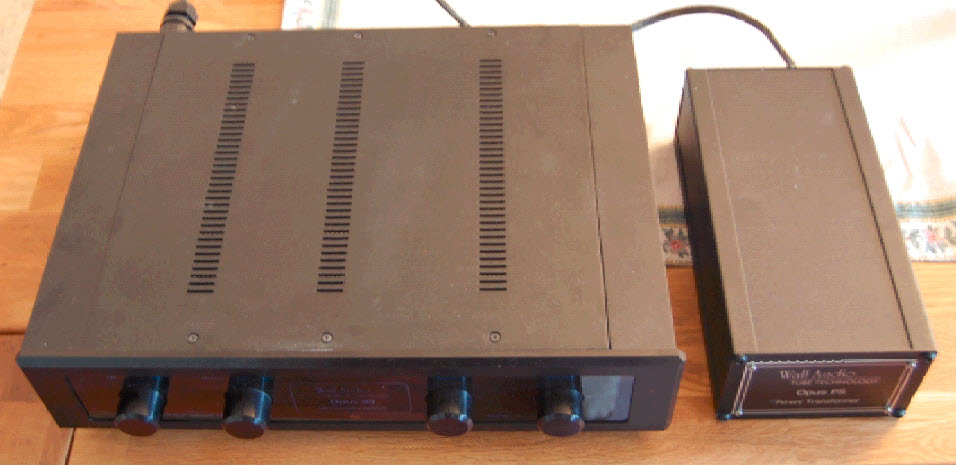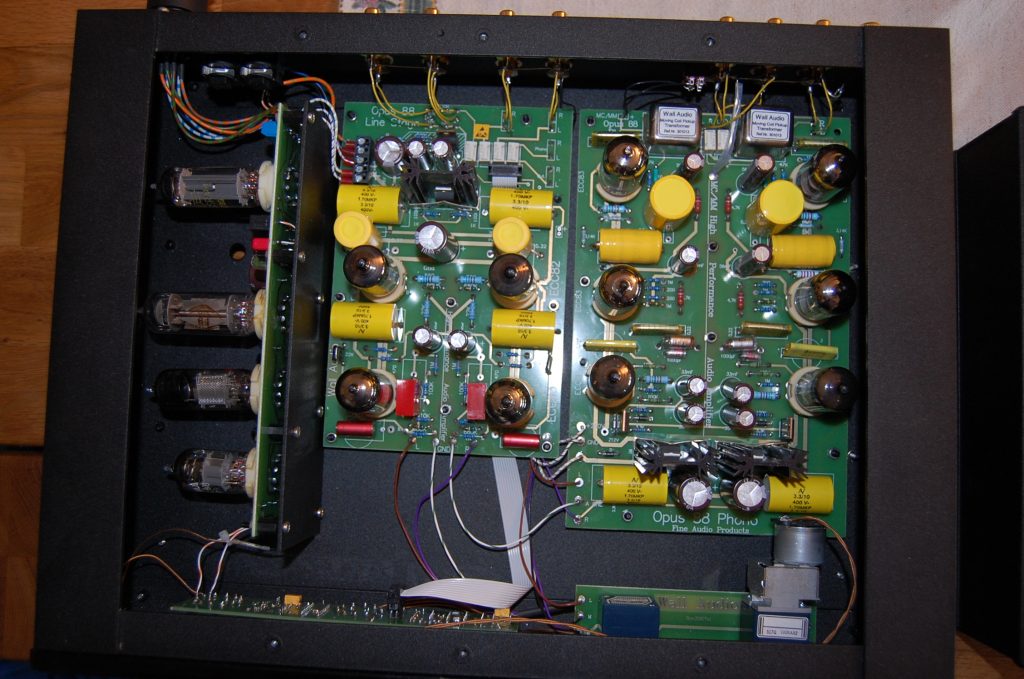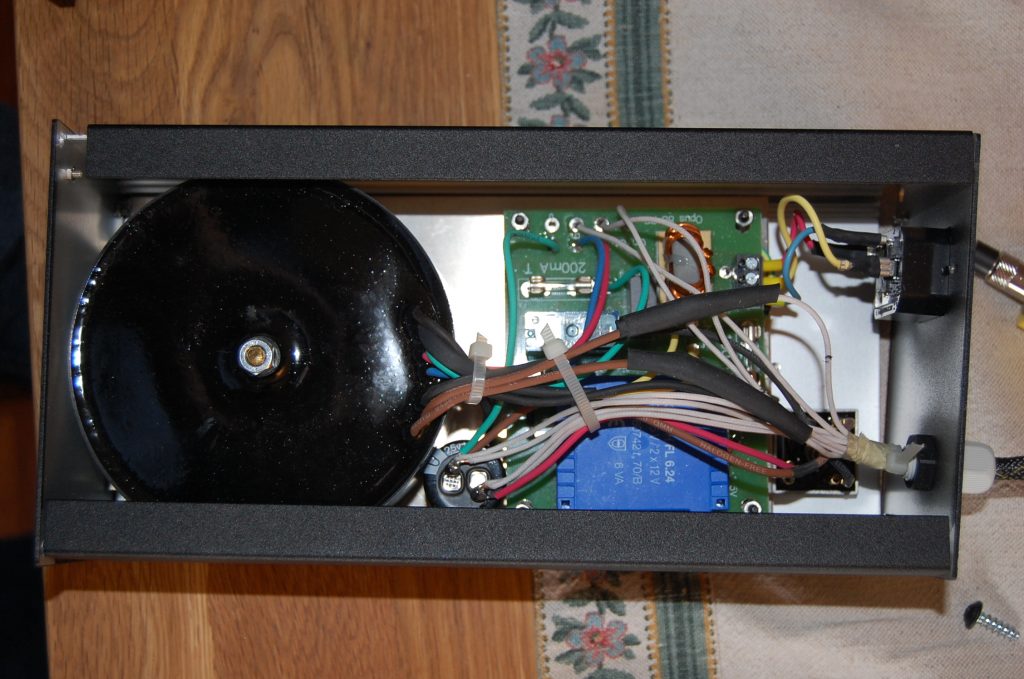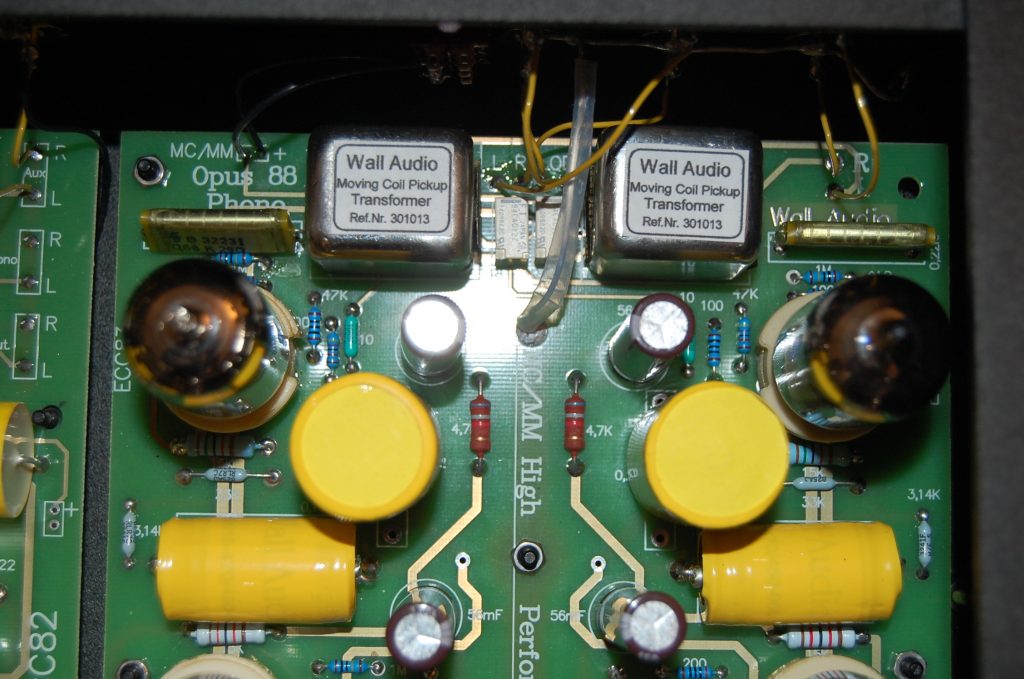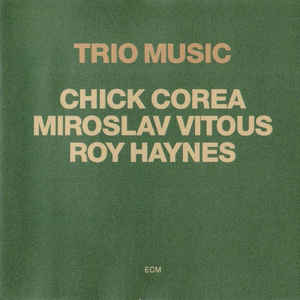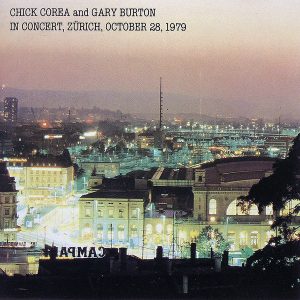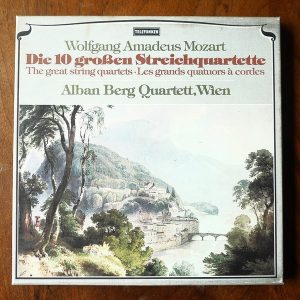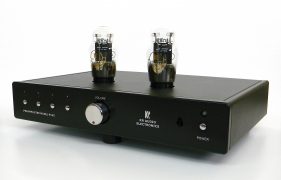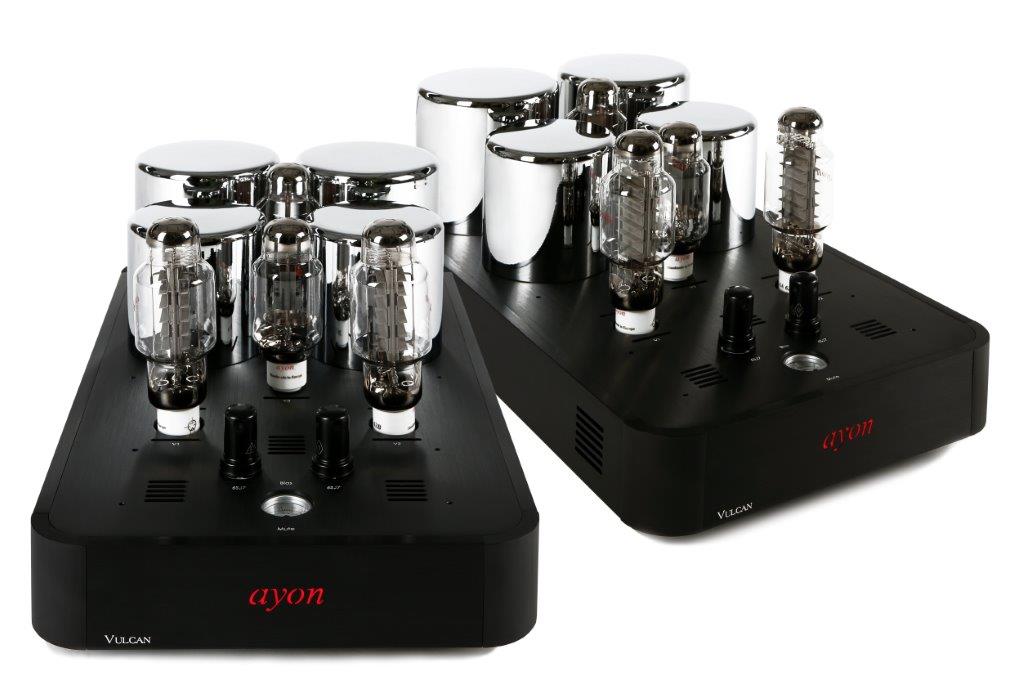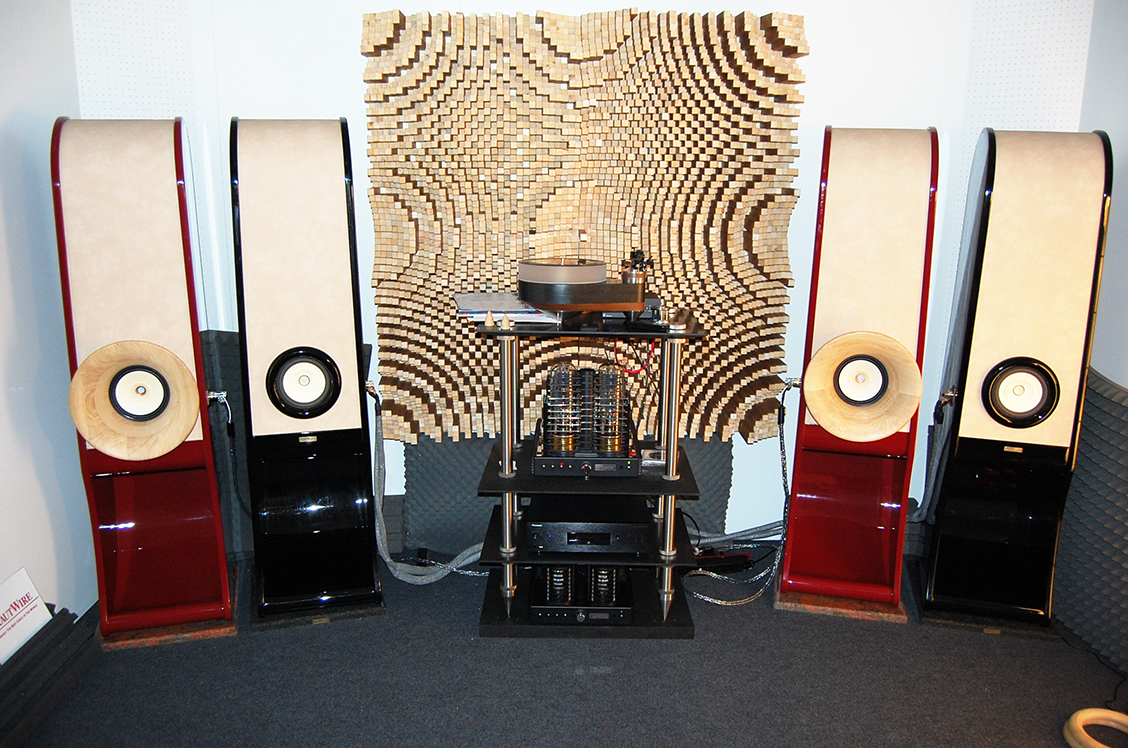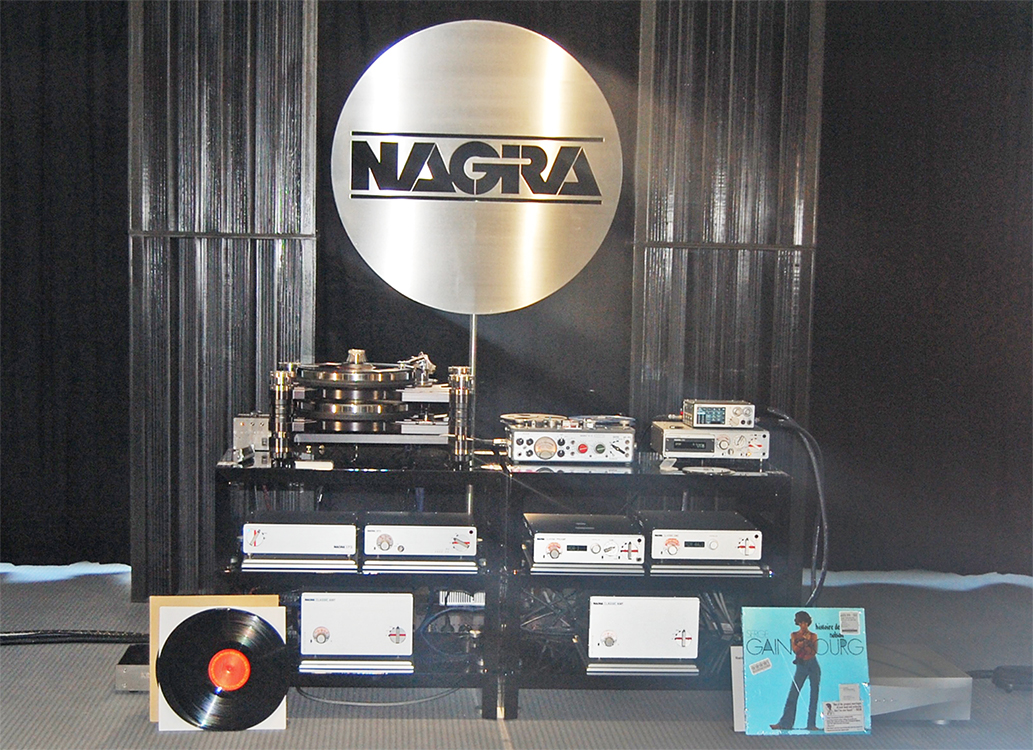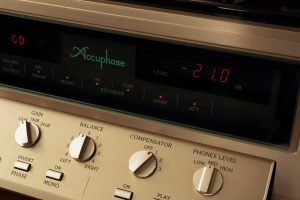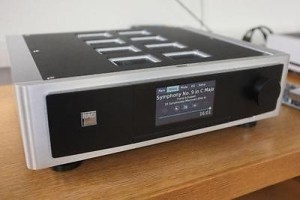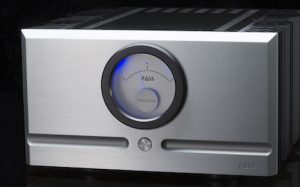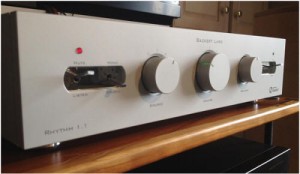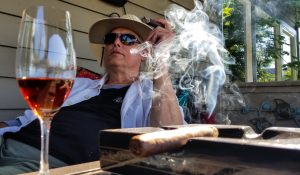Introduction
Wall Audio is a brand that is not well known to many people, even in the audiophile world, but Andreas Wall has been designing and building high end products for more than 30 years. However, he has a very good reputation for his products in the German speaking world and has garnered numerous very positive reviews from the German audio press. His small, almost one man, company manufactures a range of amplification products: two different models of monoblock power amp, two models of integrated amp, two models of full function preamp, and a stand-alone phono preamplifier.
The Wall Audio Opus 88 Stereo Preamplifier
Mr. Wall is an artisan and makes all the products in his small workshop in Freiburg, Germany. Most of the components and chassis are outsourced to local German manufacturers that come in to the company and are then hand assembled. The quality of the materials is quite high with very solid aluminum chassis (no magnetic parts are allowed in Andreas's designs, as he feels it is detrimental to the sound), high-quality circuit boards and high-leve—although not, as I can tell, premium—passive parts are used. The line stage and phono stage are on separate circuit boards, with the tube rectifier and regulator board tilted on one side of the preamplifier chassis.
There are a total of 4 tubes in the line stage and 6 in the phono stage. For the phono stage there are two inputs, MM and MC, as well as another pair of jacks that can be used for the MC loading. Interestingly, in order to have adequate gain for the MC input the signal is first routed through a small pair of mu metal shielded step-up transformers.
Top External View
Mr. Wall didn't specify the gain, but said that cartridges down to 0.2 mV will work. I didn't have on hand an MC to try out (but I did try it at a friend's place with a low output Transfiguration Axia), so all my personal evaluations of the phono stage will be from my Audio Technica AT150MLX feeding the MM input.
Internal view of the Opus 88
Wall Audio Opus 88 internal transformer/outboard power supply
The gain of both the line stage and phono stage was rather high, which in my system proved to be somewhat of a challenge for hum and noise. For some reason the combination of the Wall Audio amplifiers and their preamplifier was simply too much gain in my system, which has speakers with a sensitivity of about 96dB/watt. Since amps of this power are normally designed for such speakers, I do not understand the need to make the gain so high for both pieces.
Internal shot with step up transformers
The overall design is compact and elegant and resonance-free, unlike a lot of preamps I have seen with clangy sheet metal tops (my own NAT Plasma is sadly like this, but it has so many holes to dissipate heat that damping it with bitumen or similar is out of the question). I particularly like the blue light show on power up (same as with my Wall Opus M50 amps), which gives a bit of flare to an otherwise somber design (at least in the all black model I had). There is a mute turn-on delay of about 1 minute that prevents any unpleasant bumps through the system, and an honest-to-goodness balance control!
Volume is controlled by a remote control with a small plastic universal wand…not quite what I was expecting for the money, given my PureSound L10 has a nice small metal remote and costs significantly less money. The volume control itself is a plastic Alps blue Velvet potentiometer. Now I really do have to complain about this, because for nearly 6K (euro) there should never ever be this sort of cheap potentiometer. For example, the Wyetech Pearl had a VERY nice Shallco stepped attenuator, and was about $5500. Sadly, both my NAT and Puresound have the exact same inexpensive Alps blue potentiometer! I have already purchased a replacement stepped attenuator to replace in both, because I know this potentiometer is not of true high-end quality. Come on guys! It is not that expensive to put in a good stepped attenuator. At least the PureSound is using the potentiometer in a shunt fashion so that the pot is not directly in the signal path. Back in the day before Allnic, Silvaweld was putting a silver contact stepped attenuator in their 1700 Euro bottom-of-the-range preamp, the SWC-450, and I am sure that this helped to contribute to its excellent sound.
Now, I myself own Andreas's top power amplifiers, the Opus M50 monoblocks that generate 35 watts of SET power from a pair of Russian 6C33C power triodes, which is more than enough for my sensitive Odeon horns. Given that I already owned one of Wall Audio's top products, I decided to see what their preamplifiers were all about as Andreas clearly has a well-developed and consistent concept about how to design tube gear.
What is that concept, you ask? In a nutshell, it is to develop the product around a superb power supply and then use well-known circuit design to achieve realistic sound reproduction. Of course, every designer has their viewpoint on what constitutes a superb power supply. Some designers believe in using large transformers and loads of capacitance, others will go with choke filtering, and still others believe in heavily regulated supplies.
To realize this concept in their Opus 88, Wall Audio uses an all tube-rectified and tube-regulated high voltage supply. Mr. Wall believes that a properly designed tube-rectified and regulated power supply is superior to one using transistors. The power supply consists of a separate transformer with some electronic filtering that is connected to the main preamplifier by a meter-long umbilical cable. The regulator board (see photos) is located to the left of the main circuit boards and has the tubes oriented on their side rather than vertically, and consists of 5 tubes in total. The main regulator tube is the very robust Russian 6C19Pi power triode. The other tubes act as rectifier, voltage reference, and comparators.
The outcome of such regulation, if done correctly, is very stable power to the amplification tubes that prevents drift in the operating points of the tubes. Why is this important? Well, for one thing, the operating point of a tube defines the kind and amount of distortion that the tube will generate in a given circuit. If this operational point is moving, then the result is that the amount and type of distortion is also shifting around, with audible sonic consequences. It has been my experience to date that most of the best-sounding preamplifiers I have heard were utilizing tube regulation or were using solid state regulation in a shunt configuration (like Vacuumstate and their "SuperReg" circuit). Preamplifiers that I have heard that were not tightly regulated but relied primarily on large, unregulated supplies were generally less precise sounding in terms of imaging and soundstaging, as well as making sense of complex musical signals.
Wall of sound
To evaluate the line stage I fed the Opus 88 with my Monarchy Audio M24 DAC, and I compared it to both my passive Axiom preamp and another active preamp I have on hand, a heavily modified PureSound L10 preamp. The new price of the L10 preamp is around $3,000, but I have invested another $500 in parts upgrades. Specifically, I have replaced all the power supply capacitors with capacitors from Audio Note and Mundorf. In addition, and most importantly, I have upgraded the Chinese made output transformers with Lundahl "C" core output transformers (LL2745). The result is that the PureSound now performs way above what the stock preamp was capable of achieving, and is more in-line with a 5K euro preamplifier.
After allowing the preamp to warm up for a couple of days in order to allow for some break-in time (it was brand new), I began to listen. After a couple of weeks of periodic listening, where I always allowed it to warm up a good 45 minutes to 1 hour before listening, I noted some general overall observations. The soundstage is very well delineated from left to right, but somewhat less so from front to back. Depth is good, but not to the degree that I have heard with the finest preamps to pass through my house. I think that this has partially to do with the slightly accentuated highs, which tend to bring sounds forward somewhat in the soundfield. This reduced significantly after warm-up, but was never completely gone. Imaging is quite holographic for individual instruments, with a quite palpable feeling of having a real instrument right there in the room with you. The images are also simply rock-stable within the soundfield with well-defined positions and edges.
The lower frequencies are characterized by a tight and a slightly lean (perhaps only in contrast to the slightly strong character from the highs) mid-bass, but with fairly good deep bass extension. I was, however, impressed with the articulation and tone differentiation that was apparent throughout the bass range. This was particularly noticeable with classical bass instruments, such as the bowed double bass, and especially with cellos.
I was particularly intrigued to listen to my favorite chamber music because of the superb spatial presentation through the Opus 88 and the way tone of cello is so realistically portrayed. This superb tonal differentiation continued up the spectrum, and the Opus 88 is one of the few preamps I have heard that can easily distinguish not only in space but in the slightly deeper richer tonal balance of the viola in a busy quartet. The first preamp I heard that could do this was the Silvaweld SWC-1000 that was designed by the now well-known Mr. K. S. Park of Allnic fame. The excellent upper frequency extension gave a real sheen, and dynamic expression violins and this was particularly evident with violin sonatas and concertos, although it still with a slight reduction of soundstage depth.
One recording that I find to be a very good one to evaluate the tonal qualities of a playback system is the Britten Violin Concerto with Mark Lubotsky playing the violin on Decca (CD) and with Benjamin Britten himself conducting. The performance is one of the best recorded, and the quality of the recording is excellent. With this recording the Opus 88 unraveled the complex orchestration and had excellent projection of the violin, and revealed its complex tonal character. As a result I felt total engagement with this piece, which with lesser preamps can seem quite slow in places, as the Opus 88 allowed me to focus where I desired, individual instruments or sections, or take it in as a whole.
I would like to point out that while the Opus 88's performance was stellar, it was not quite among the very best I have heard. There is another level or realism that is achieved by very few preamps (Kondo KSL M77, Vacuumstate RTP-3D, Lyra Connoisseur and perhaps the Robert Koda K-15 or Allnic DHT preamp come to mind) that are out there, and while the Opus 88 is very good it does not quite reach that exalted level. However, it will give a reasonable close realism that many other preamps, including many quite expensive ones, fail utterly to deliver.
Compared to the Axiom passive, which is still one of the best passives I have heard despite its very low price, the sound of the Opus 88 was fuller and more dynamic…what I would have expected from a superior active vs. passive preamp. The Opus 88 also provided more three-dimensional and "present" images that were quite exciting to listen to.
The PureSound L10 gives a significantly different overall sound character to the Opus 88; it is somewhat warmer with a significantly more powerful bottom end and richer upper bass. The highs are smooth and unforced, resulting in a rather relaxing but seriously dynamic ride. Overall resolution, though, is slightly lower, and imaging is not as sharply focused nor as precisely placed in the soundstage; however, the images are big and palpable and have a huge dynamics. The Opus 88 offers a more precise and well-defined soundstage, but with perhaps less ultimate drive. Tonally, the modded PureSound is richer and fuller and arguably more dynamic, but less precise. It was like a bit of softer focus on a camera lens, perhaps, in comparison to the Opus 88.
For some music, usually simpler fare, the Puresound was a competitive alternative, but once you put on a complex piece like the Britten Violin concerto, the Opus 88 pulled clearly ahead with its ability to unravel and yet keep the whole the orchestra and the placement of a solo violin in that huge sound field. Ultimately, I think that the modded PureSound lacked precision in direct comparison, and that the Opus 88 was overall the superior preamp.
Wall to Wall preamp!
All the comments above are based upon playing PCM digital (straight Redbook CD), but since the Wall Audio Opus 88 is a full featured preamp, I next put the phono stage through its paces. I was comparing it primarily to my Silvaweld SWH-650 phono preamp that was fed into either a passive preamp (Luminous Audio Axiom shunt volume control) or through the line stage of the Opus 88. A problem developed with the volume control of the PureSound L10 that unfortunately put it out of commission for the remainder of the test.
The Wall Audio Opus 88 phono stage strikes the listener immediately with a clear and open voice. Transparency is of a very high order, with a very good "hear-through" character. The highs are wide open, but on some songs played, as with CD reproduction, it was arguably a tiny bit on the bright side, but this more often than not contributes to the sensation of a wide-open window of sound.
Using my own Silvaweld SWH-650 phonostage fed through the Opus 88 line stage resulted—with very good recordings like Chick Corea's trio music on ECM from about 1981—in a stunningly realistic sound. Dynamics were at times explosive, but perhaps more so at the top end of the frequency spectrum than at the bottom, which remained tight and slightly reined in by comparison. The mids blended well with the highs here, giving an extreme sense that all which is on the recording is being picked up and transmitted with a high degree of analytical detail. The sense of space, decay and imaging precision all contributed to the highly realistic illusion presented in the room.
With the Opus 88 as a full preamplifier the tone was very similar, as was the image stability. Transparency was at least as good, and dynamics were superb, with no hint of compression on peaks and very clear rendering of low level information. However, it became clear in going back and forth between the two phono stages that the Silvaweld was a bit more expansive in the soundstage and captured a bit more of the low level ambient information, leaving the Opus 88 sounding ever so slightly dry and lacking "air," but only in comparison to the Silvaweld, which was nearly as expensive as the whole Opus 88.
Chick Corea and Gary Burton live in Zürich
Sticking with ECM recordings, I also compared the two using one of my favorite jazz recordings, Chick Corea and Gary Burton live in Zürich 1979. This live recording has incredible dynamic energy from both Chick's piano and Gary's vibraphone. With lesser preamps, the dynamic parts where the two instruments are playing full tilt together get smeared, and it becomes difficult to follow the lines of each instrument. It can sound messy. The Opus 88, both as a line stage being fed by my phono stage and as a standalone full preamp, had no problems whatsoever keeping the two instruments clearly delineated in space. It was able to separate the all-important tone of the instruments themselves. I have not heard any full featured preamp that can do this as well as the Wall Audio Opus 88 at anywhere near the asking price.*
Alban Berg Quartet Mozart Quartets
I also tested the full Opus 88 preamp with classical quartet. I have a nice LP box set of Mozart string quartets (5 records, 10 quartets in all) performed by the famous Alban Berg Quartet on Telefunken records. The sound quality is a bit dry but very clean with these recordings, without too much of a "hall" sound for ambience. The result is a rather immediate and direct sound, as if one was sitting only a couple of meters from the performers. The Opus 88 as a full preamp captured this perspective accurately and kept the instruments very well placed in space, so that when I closed my eyes I could visualize three-dimensional musicians sitting in a real space and clearly separated from each other. The result was superb analog sound from the combination of my Yamaha GT-2000 turntable and Audio Technica AT150MLX cartridge fed into the MM input of the Opus 88. In comparison to the line stage fed by my Silvaweld, the Opus 88 lost just a bit of the overall gestalt that I have heard captured better than my Silvaweld only by very nice (and pricey) preamps, like the Vacuumstate RTP-3D that I reviewed a decade ago.
I would say that unless you are prepared to spend at least $10K for a full-function preamplifier, you cannot really do better than what I have heard from the Wall Audio Opus 88. I think it was more successful as a full preamp than the AcousticPlan Sarod, which has a phenomenal line stage but a less successful phono preamp, and that costs significantly more money than the Opus 88.
I did have the opportunity to try out the Opus 88 with a low output MC at a friend's place. We tried the Opus 88 in a system that consists of a classic Luxman PD-444 direct drive TT, SME 309 arm, and a Transfiguration Axia cartridge. The Opus 88 replaced an inexpensive AudioLab phono stage feeding the superb Einstein "The Tube" preamp. The rest of the system consisted of Cabasse Baltic Evo "eyeball" speakers and a pair of Rel Gibraltar sub woofers. The amplifier was a VAC 30/30 Renaissance Mk2. The Opus 88 as a full preamp was clearly superior to the Einstein+Audiolab preamplifier combination, providing more dimensional imaging, a cleaner top end, and a more natural tone. This to my ears confirms that for analog there is no free lunch; you cannot compensate for a damaged signal by running it through a great line stage and amplifier. The signal coming from the turntable is small, and if the phono stage doesn't get it right then sound quality through the rest of the system will suffer.
Conclusions
The Wall Audio Opus 88 is a finely crafted and superbly performing music making machine. It mates a highly resolving, tonally inviting, precise imaging line stage with an equally compelling phono stage for a price that would be difficult to beat with a separate line and phono stage costing double the price of the Opus 88.
Its considerable strengths lie mainly in its dynamics and imaging/soundstaging precision that remained utterly unruffled regardless of the musical demands. It was a delight to listen to complex music and hear how easily one can hear different aspects of the whole, without losing the cohesion of the whole that I have often heard with "highly resolving" solid state preamps. I would put these strengths at just below some of the reference level gear I have heard over the years, but above any 6K preamps I have heard for sure.
Tonal balance was good, but perhaps slightly light in the mid/upper bass, which led to a slight upward tilt in perceived frequency response. So in this regard it was perhaps not perfect, but certainly not aggressive or strident, as highs remained clear and open at all times. In that aspect it falls a bit short of the best. This was true for both analog and digital sources. I would not let this dissuade you as a potential buyer, however, because what it brought was a superb resolution of tone and texture to the bass that to my mind mostly compensated for the slightly leaner balance.
All-in-all, I would have to say that the Wall Audio Opus 88 is a very good preamp at a highly competitive price*; for those looking for an all-in-one solution to the preamplifier question, this is one to seriously consider.
* Mr. Wall has informed me that the retail price of the Opus 88 will go up significantly from the current price of 5200 euros to 5900 euros.
Wall Audio Tube Technology
Wöhlerstrasse 2
D – 79108 Freiburg
Tel.: +49 (761) 5009466
[Hardware photographs by Brad Morrical.]





